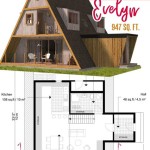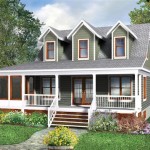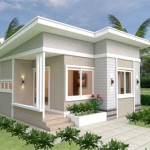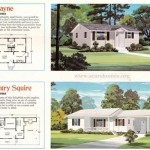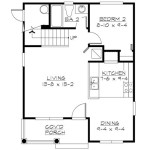Ranch Style Home Plans With Wrap Around Porch: A Comprehensive Guide
Ranch style homes, characterized by their single-story layout and long, low-pitched roofs, have enjoyed enduring popularity in American residential architecture. The addition of a wrap-around porch to a ranch style home not only enhances its aesthetic appeal but also significantly expands its functional living space, blurring the lines between indoor and outdoor living. This article provides a comprehensive overview of ranch style home plans incorporating wrap-around porches, covering various aspects from design considerations to functional benefits.
The ranch style emerged in the early 20th century, drawing inspiration from Spanish Colonial and Western American architectural styles. Its emphasis on simplicity, functionality, and accessibility made it a particularly attractive option for growing families and individuals seeking ease of navigation within the home. The wrap-around porch, acting as an extension of the living space, further reinforces these core principles by providing an accessible and expansive outdoor area for relaxation, entertainment, and connection with the surrounding environment.
Key Design Considerations for Ranch Style Homes With Wrap Around Porches
Integrating a wrap-around porch into a ranch style home plan requires careful consideration of several design elements. These include the porch's orientation, dimensions, materials, and its relationship to the interior living spaces. Proper planning ensures a cohesive and functional design that complements the overall aesthetic of the home.
Orientation: The orientation of the wrap-around porch is crucial for maximizing its usability and comfort. Ideally, the porch should be positioned to take advantage of prevailing winds and natural sunlight, while also offering protection from harsh weather elements. In warmer climates, a porch primarily facing north or east can provide shade during the hottest parts of the day. Conversely, in cooler climates, a south-facing porch can offer warmth during the winter months. The prevailing wind direction should also be considered to minimize exposure to strong gusts and maximize natural ventilation. Strategic landscaping, such as planting trees or shrubs, can further enhance the porch's climate control capabilities.
Dimensions: The dimensions of the wrap-around porch should be proportional to the size of the house and the intended use of the porch. A porch that is too narrow may feel cramped and unusable, while a porch that is too wide may overwhelm the overall design. A minimum depth of 8 feet is generally recommended to allow for comfortable seating and circulation. The length of the porch will depend on the specific footprint of the house and the desired extent of the wrap-around effect. Careful consideration should be given to the placement of furniture, walkways, and access points to ensure a functional and inviting space.
Materials: The choice of materials for the wrap-around porch should complement the existing architectural style of the ranch home and withstand the local climate conditions. Common materials include wood, composite decking, concrete, and stone. Wood offers a classic and natural aesthetic, but requires regular maintenance to prevent rot and decay. Composite decking provides a low-maintenance alternative that mimics the look of wood while offering superior durability. Concrete and stone are durable and versatile options that can be used for flooring, columns, and railings. The selection of materials should also consider the desired aesthetic and budget constraints.
Relationship to Interior Spaces: The seamless integration of the wrap-around porch with the interior living spaces is essential for creating a cohesive and functional design. Large windows and doors, such as French doors or sliding glass doors, can provide easy access to the porch and blur the lines between indoor and outdoor living. The layout of the interior spaces should consider the porch as an extension of the living room, dining room, or kitchen, allowing for comfortable flow and interaction between the two areas. Incorporating similar design elements, such as flooring materials or color palettes, can further enhance the sense of continuity.
Beyond these core design elements, attention should also be given to details such as lighting, railings, and screening. Adequate lighting is crucial for creating a safe and inviting space, especially during the evening hours. Railings can provide safety and security while also adding to the aesthetic appeal of the porch. Screening can help to keep insects out and provide privacy from neighbors. These details, when thoughtfully considered, can significantly enhance the overall usability and enjoyment of the wrap-around porch.
Functional Benefits of a Wrap Around Porch on a Ranch Home
The addition of a wrap-around porch to a ranch style home offers numerous functional benefits, extending beyond mere aesthetic appeal. These benefits encompass increased living space, enhanced outdoor enjoyment, and improved energy efficiency.
Expanded Living Space: The most significant benefit of a wrap-around porch is the expansion of the home's living space. The porch provides an outdoor area for relaxation, dining, and entertaining, effectively increasing the usable square footage of the home. This is particularly valuable in climates where outdoor living is possible for a significant portion of the year. The wrap-around design offers multiple zones for different activities, allowing for simultaneous use by different members of the household. For example, one section of the porch might be dedicated to outdoor dining, while another section is used for lounging and reading.
Enhanced Outdoor Enjoyment: A wrap-around porch provides a protected and comfortable space to enjoy the outdoors, regardless of the weather conditions. The roof provides shade from the sun and protection from rain, allowing for year-round use. The porch also offers a vantage point from which to appreciate the surrounding landscape and connect with nature. This connection with the outdoors can have significant benefits for mental and physical well-being, promoting relaxation and reducing stress. The porch can also serve as a versatile space for hobbies and activities, such as gardening, painting, or yoga.
Improved Energy Efficiency: A wrap-around porch can contribute to improved energy efficiency by providing shade to the exterior walls of the home. This shade reduces the amount of direct sunlight that reaches the walls, which in turn lowers the temperature inside the house. This can significantly reduce the need for air conditioning during the summer months, resulting in lower energy bills. In colder climates, the porch can also act as a buffer against the cold, helping to retain heat inside the house. The strategic placement of plants and trees around the porch can further enhance its energy efficiency benefits.
In addition to these core benefits, a wrap-around porch can also increase the curb appeal and resale value of a ranch style home. The porch adds a distinctive architectural feature that enhances the overall aesthetic of the home. It also provides a welcoming and inviting space that can appeal to potential buyers. The added living space and outdoor enjoyment opportunities make the home more desirable and competitive in the real estate market.
Variations in Ranch Style Home Plans With Wrap Around Porches
Ranch style home plans with wrap-around porches offer a high degree of customization and flexibility, allowing homeowners to tailor the design to their specific needs and preferences. These variations can be categorized based on the size and layout of the home, the style of the porch, and the materials used in construction.
Size and Layout Variations: Ranch homes with wrap-around porches can range in size from modest single-family dwellings to sprawling estates. The layout of the home can also vary, with options for open-concept living spaces, separate living and dining areas, and multiple bedrooms and bathrooms. The size and layout of the porch should be proportional to the overall size of the home and the intended use of the porch. Smaller homes may have a narrower porch that extends along one or two sides, while larger homes may have a wider porch that wraps around the entire perimeter. The layout of the interior spaces should also be considered in relation to the porch, ensuring seamless integration and easy access.
Porch Style Variations: The style of the wrap-around porch can be customized to reflect the homeowner's personal preferences and the overall architectural style of the home. Common porch styles include traditional, contemporary, and rustic. Traditional porches often feature ornate columns, decorative railings, and intricate trim. Contemporary porches tend to be more minimalist in design, with clean lines and simple materials. Rustic porches often incorporate natural elements, such as wood and stone, to create a more organic and informal feel. The choice of porch style should complement the existing architectural style of the ranch home and create a cohesive and harmonious design.
Material Variations: As previously mentioned, the materials used in the construction of the wrap-around porch can significantly impact its aesthetic appeal, durability, and maintenance requirements. Common materials include wood, composite decking, concrete, and stone. Each material offers its own unique set of advantages and disadvantages. Wood provides a classic and natural aesthetic, but requires regular maintenance to prevent rot and decay. Composite decking is a low-maintenance alternative that offers superior durability. Concrete and stone are durable and versatile options that can be used for flooring, columns, and railings. The selection of materials should consider the desired aesthetic, budget constraints, and the local climate conditions.
Beyond these general categories, there are countless other ways to customize a ranch style home plan with a wrap-around porch. Homeowners can incorporate unique features such as outdoor fireplaces, built-in seating, and custom lighting to create a truly personalized space. The possibilities are limited only by the imagination and budget. Working with an experienced architect or designer can help homeowners to explore these options and create a design that meets their specific needs and preferences.
Ultimately, the design of a ranch style home with a wrap-around porch should be a reflection of the homeowner's individual style and lifestyle. By carefully considering the design elements discussed in this article, homeowners can create a beautiful and functional space that enhances their enjoyment of their home for years to come.

Plan 88447sh Wrap Around Porch Rustic House Plans Farmhouse Style Ranch

Wrap Around Porch S2635b House Plans Over 700 Proven Home Designs By Korel
House Floor Plans With Wrap Around Porches

Country Style House Plan With Wrap Around Porch Farmhouse Plans New

3 Bedroom Country Home Floor Plan With Wrap Around Porch 138 1002

Wrap Around Porch House Plans
:max_bytes(150000):strip_icc()/tideland-haven_0-67e696598afc46328367d3653cfd9724.jpg?strip=all)
13 House Plans With Wrap Around Porches

Small Ranch House Plan Two Bedroom Front Porch 109 1010
:max_bytes(150000):strip_icc()/HOH_SL1482-df5abe9d7ee44f7a9f29e0a7b412b06c.jpg?strip=all)
13 House Plans With Wrap Around Porches

Wrap Around Porch House Plans Designs For Builders

